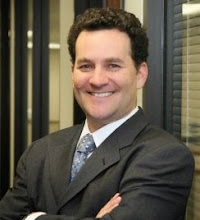Linda Heyen worked for Safeway as an assistant store manager. In 2006, she was added as a named plaintiff in an existing putative class action as against Safeway. The plaintiffs alleged that Safeway should have treated them and other assistant store managers as nonexempt employees. The trial court denied their motion for class certification in 2008, and Heyen's individual action went to trial in 2009. An advisory jury and the trial court found that Safeway improperly classified her, and the court entered judgment in her favor. The Court of Appeal affirmed, holding:
The trial court did not apply an incorrect legal standard to determine that Heyen was a nonexempt employee. Slip op. at 24-37. It properly found that time during which Heyen was performing both exempt and nonexempt tasks -- for example, when she was both running a cash register and simultaneously managing the front end of the store, including instructing and coaching other employees -- should count as nonexempt time for purposes of determining whether she was “primarily engaged in duties which meet the test of the exemption.” The Court drew four general principles from the Wage Order and the federal regulations incorporated therein:
First, work of the same kind performed by a supervisor's nonexempt employees generally is “nonexempt,” even when that work is performed by the supervisor. If such work takes up a large part of a supervisor's time, the supervisor likely is a “nonexempt” employee. (§§ 541.108(g), 541.111(b), 541.115(b).)
Second, the regulations do not recognize “hybrid” activities—i.e., activities that have both “exempt” and “nonexempt” aspects. Rather, the regulations require that each discrete task be separately classified as either “exempt” or “nonexempt.” (§§ 541.102(a), 541.108(a)-(g).)
Third, identical tasks may be “exempt” or “nonexempt” based on the purpose they serve within the organization or department. Understanding the manager's purpose in engaging in such tasks, or a task's role in the work of the organization, is critical to the task's proper categorization. A task performed because it is “helpful in supervising the employees or contribute[s] to the smooth functioning of the department” is exempt, even though the identical task performed for a different, nonmanagerial reason would be nonexempt. (§ 541.108(a).)
Finally, in a large retail establishment where the replenishing of stocks of merchandise on the sales floor “is customarily assigned to a nonexempt employee, the performance of such work by the manager or buyer of the department is nonexempt.” (§ 541.108(c).) Similarly, in such a large retail establishment, a manager's participation in making sales to customers is nonexempt, unless the sales are made for “supervisory training or demonstration purposes.” (§ 541.108(e).)
Slip op. at 31. Based on these principles, the Court concluded that the following jury instruction was not erroneous:
If a party claims that an employee is engaged in concurrent performance of an exempt and non-exempt work, you must consider that time to be either an exempt or a non-exempt activity depending on the primary purpose for which the employee undertook the activity at that time. The nature of the activity can change from time to time.
Next, the Court held that the trial court did not fail to address the rule that the trier of fact must take into account the “employer's realistic expectations and the realistic requirements of the job.” Slip op. at 38-39. Substantial evidence supported the jury's finding that that "Heyen's practice of doing significant amounts of nonexempt work did not 'diverge[] from [Safeway's] realistic expectations.'" Slip op. at 39.

No comments:
Post a Comment
Note: Only a member of this blog may post a comment.